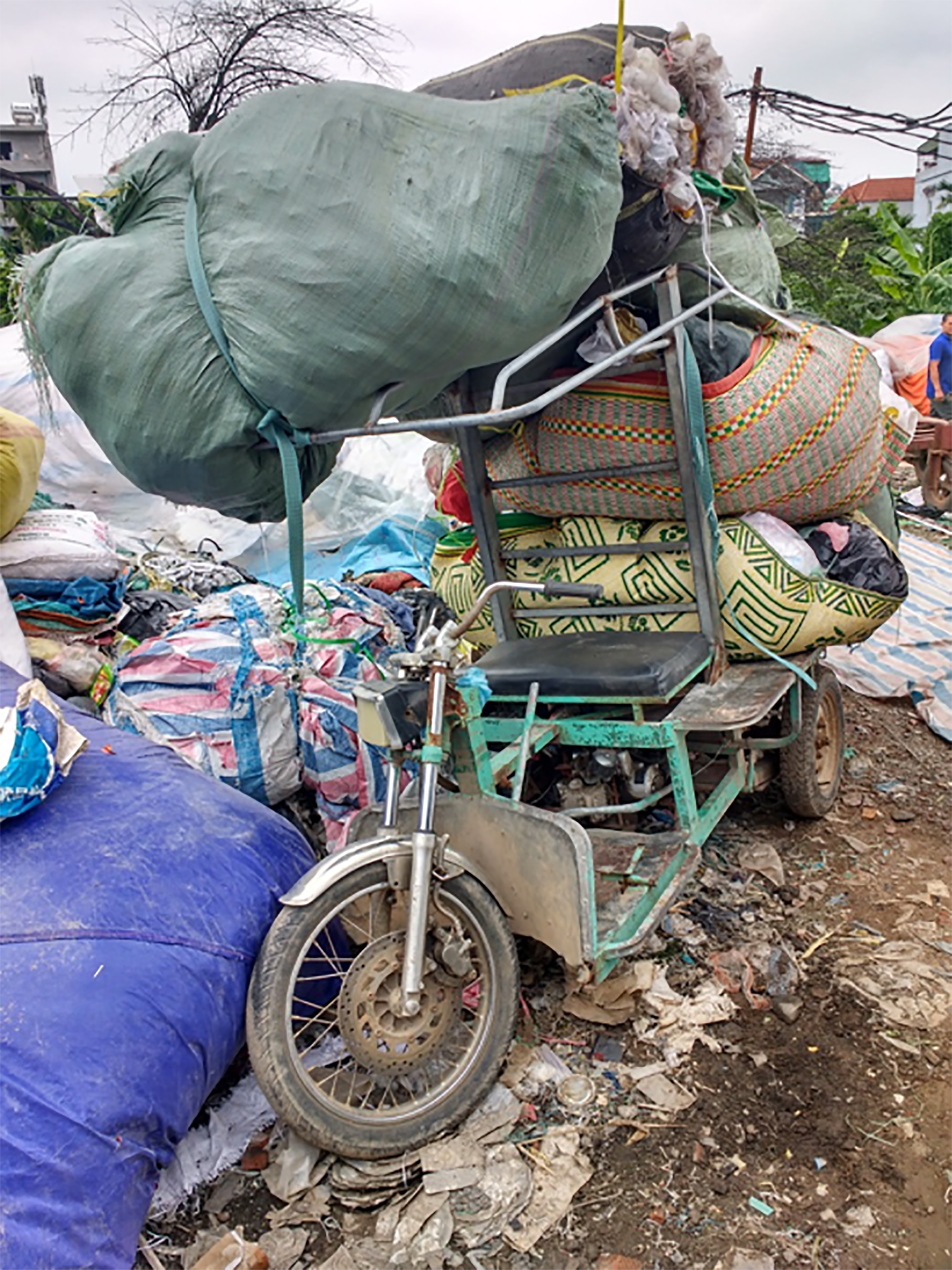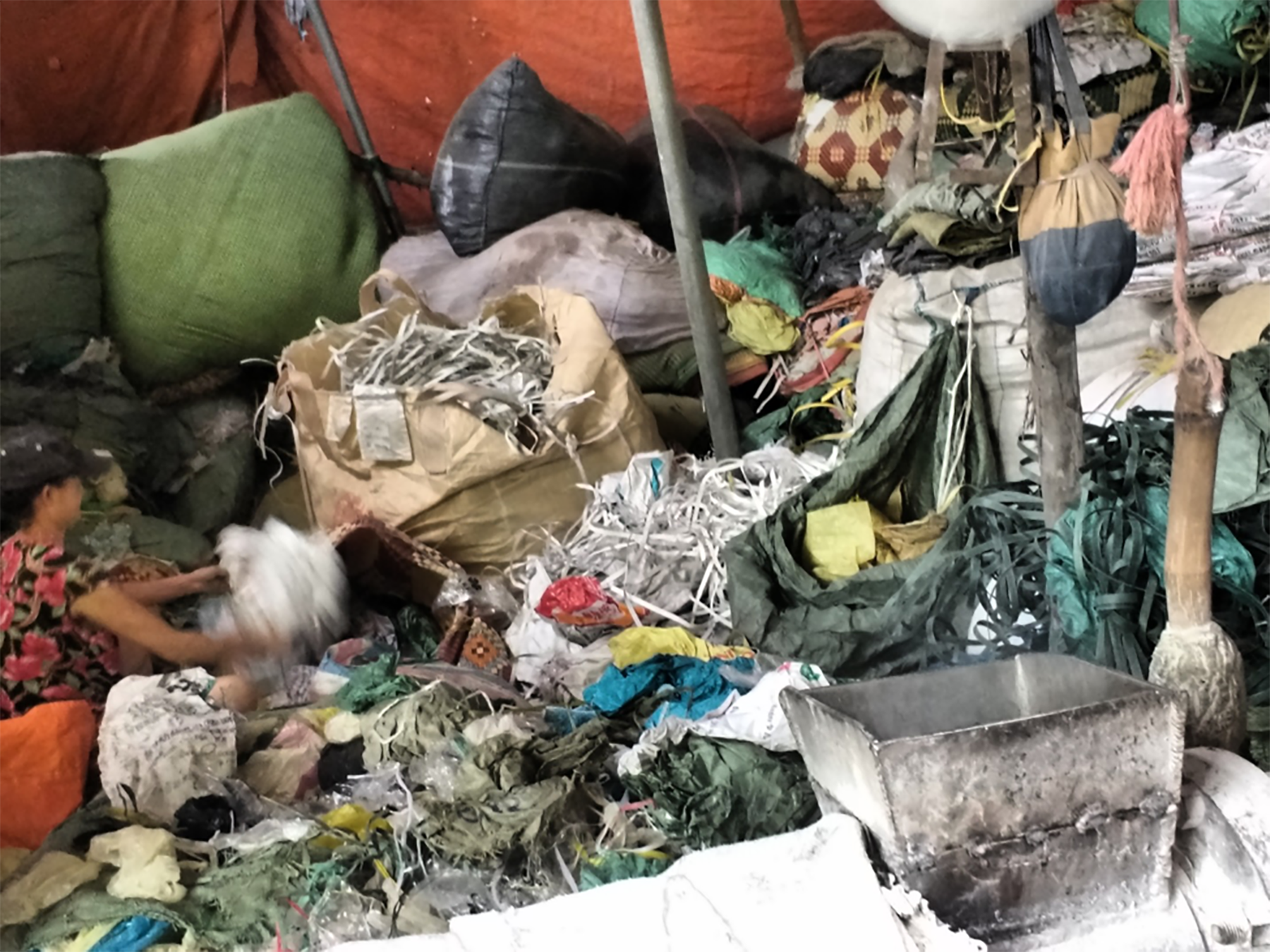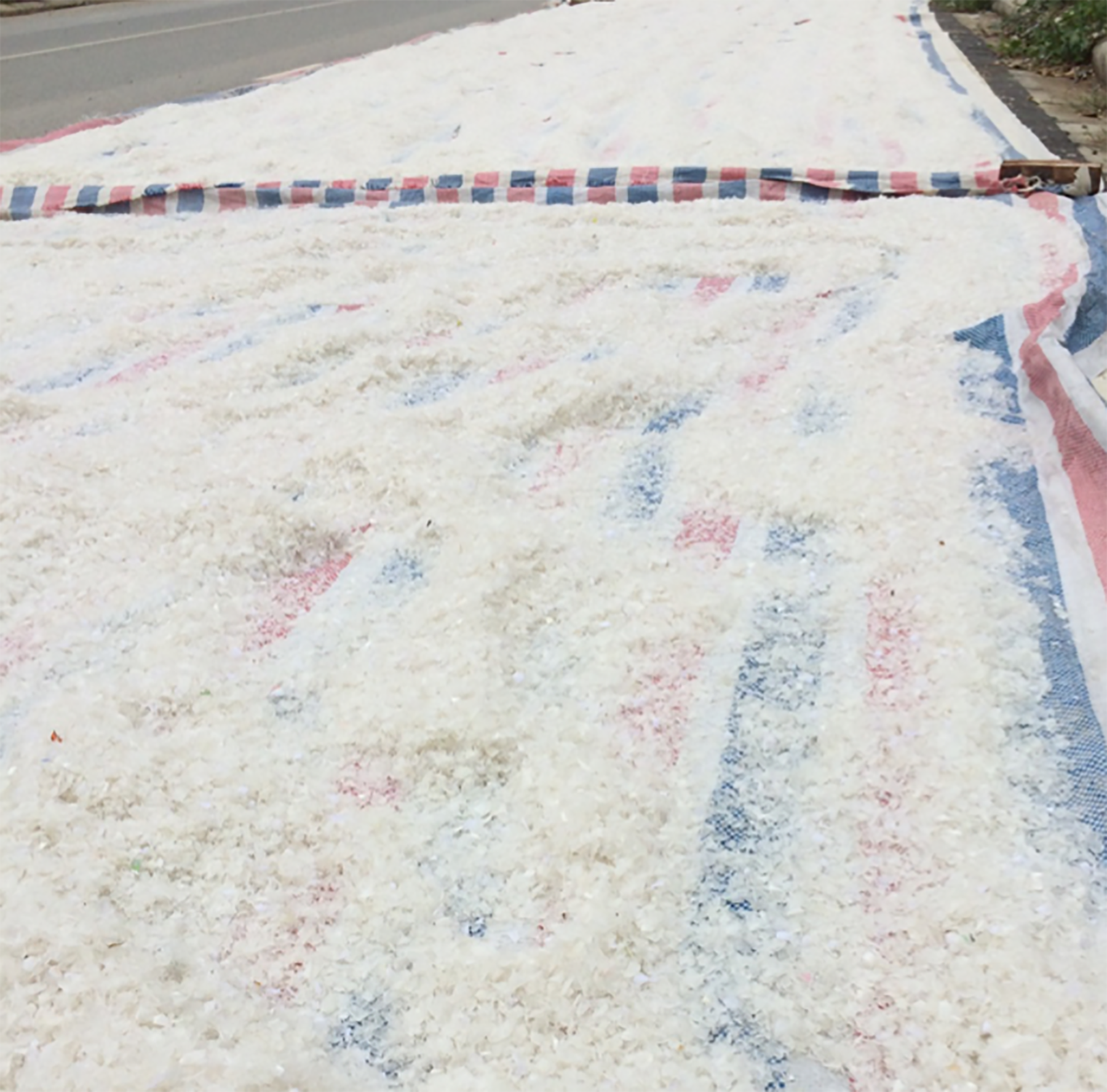72 Hours in Vietnam: Observations from Craft Recycling Villages
Published by Ocean Conservancy
The growing threat of trash entering our ocean is a global problem, but this is truly an instance where thinking globally and acting locally applies. Scientists have estimated that about 8 million metric tons of plastic are entering the ocean every year and about 80% of this starts on land (Jenna R. Jambeck 2015). Left unabated, this translates to an ocean with 1 ton of plastic for every 3 tons of fish by 2025! These same scientists also found that the majority of this plastic currently comes from inadequate waste management―either trash that is never collected and spills directly into the environment, or trash that is collected but escapes because it’s not properly handled. Moreover, countries experiencing rapid economic growth may not have a waste infrastructure to keep pace with increased household consumption. This mismatch results in large amounts of plastic waste entering our ocean.


I was fortunate to travel to Hanoi, Vietnam recently to better understand some of the challenges and realities in the waste management system on the ground, particularly in rural areas. It’s true that the plastic waste challenges are substantial, but we also found hard working entrepreneurs who have created recycling systems, as well as dedicated non-governmental organizations, that are working with communities to help solve these issues. We visited several villages and met business owners on the outskirts of Hanoi who were processing recyclable materials. Although there is a formal waste collection system in these places, the materials seemed to flow through an informal series of waste pickers, middlemen and aggregators that help transport and generate significant volumes of material to small cottage industries that specialize in various kinds of recycling.


Many of the business owners that we spoke with have family operated facilities and employed fewer than 10 people. Each business was very specialized in a specific step in the recycling process and well connected and knowledgeable about the next stage in the production stream, which in some instances was a neighbor or nearby facility. The collection and recycling of the materials they use–whether that is nylon bags or beverage bottles or industrial film–can be quite comprehensive, and provides an income to many families. However, the safety and environmental conditions create issues for the workers and communities as a whole.


The process of sorting, separating and processing the materials in many instances is very labor intensive and much of it is done by hand. As a result, the effectiveness of such processing practices is relatively high as each piece of material entering the recycling stream is being handled, but the efficiency in which it is being done could be improved to help facilitate the processing of more material in better working conditions. Many of the facilities that we visited had stock piles of material that would take weeks, if not longer, to process. The equipment used is small and old, with limited safety or environmental protections, often leading to lower quality end products and significant environmental and health impacts. Local governments and the communities are aware of these challenges but at the same time the need to create and maintain jobs and employment is critical; thus, it is incredibly challenging to close such businesses even though they lack the resources to facilitate upgrades.


The efforts observed in the areas we visited surrounding Hanoi demonstrate local solutions to address a global problem of plastic waste and marine debris, but also an enormous lack of resources and capacity to do so in a way that is safe and efficient. Speaking with local NGOs and government officials, we know that the challenges become even more visible the further outside of the city that you get, where formal waste collection stops and waste is often openly burned or dumped. The challenges remain but local NGOs and leaders are working to recover biomass for fuel and teach communities about sorting waste and managing it better. The desire for change is strong–what is needed are resources and additional technical support. We believe there are ways organizations like Ocean Conservancy and the Trash Free Seas Alliance® can help. We will be traveling back to Vietnam in September, and are looking forward to continuing to understand the challenges facing the communities and working with partners on the ground to leverage opportunities to strengthen waste management practices and eliminate the threat of marine debris.
Readers of our blog likely appreciate the many benefits and beauty of our ocean, but also understand the constant threats that it faces. Within Ocean Conservancy’s Trash Free Seas® Program, we are at the forefront of developing solutions to eliminate trash entering our waterways through efforts like the International Coastal Cleanup and Good Mate, as well as looking at land-based solutions to address marine debris through the Trash Free Seas Alliance®. Ocean trash is a global problem that will require a global effort to support the successful initiatives that exist while making resources and information available to areas where inputs are greatest. Collaborating with governments, people and companies in priority ocean plastic geographies can help us find solutions towards our vision of trash free seas.
You can help be a part of the solution to keep millions of pounds of trash from our ocean—help us achieve the vision of a healthy, vibrant ocean free of trash. Take a stand to clean up the ocean. Ask your Senator to turn the tide on ocean plastics. Take action today.
The post 72 Hours in Vietnam: Observations from Craft Recycling Villages appeared first on Ocean Conservancy.
Read the full article at: https://oceanconservancy.org/blog/2017/08/04/72-hours-vietnam-observations-craft-recycling-villages/


